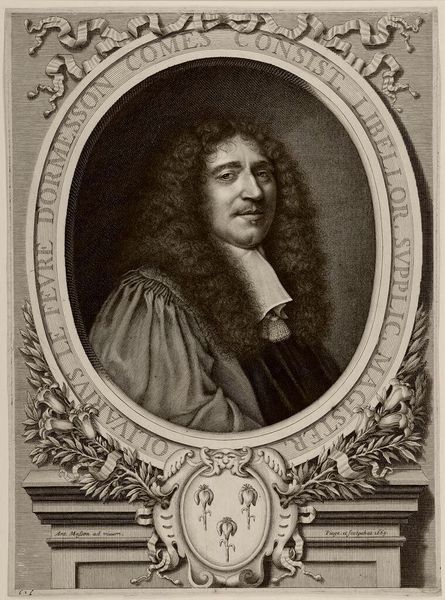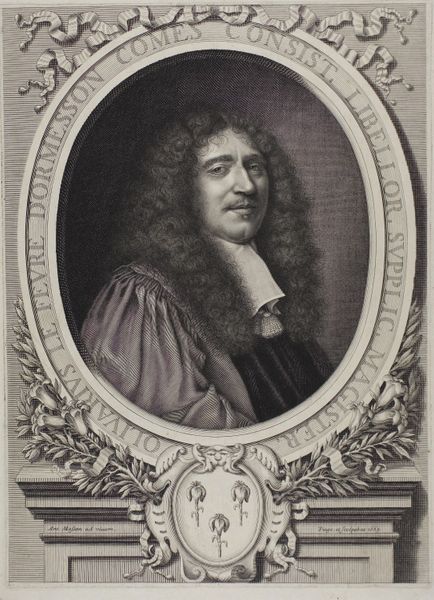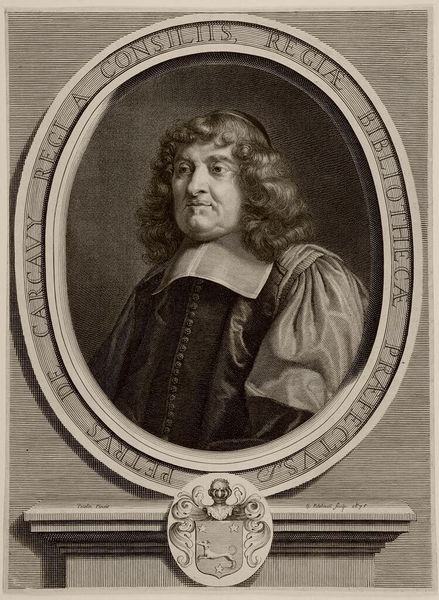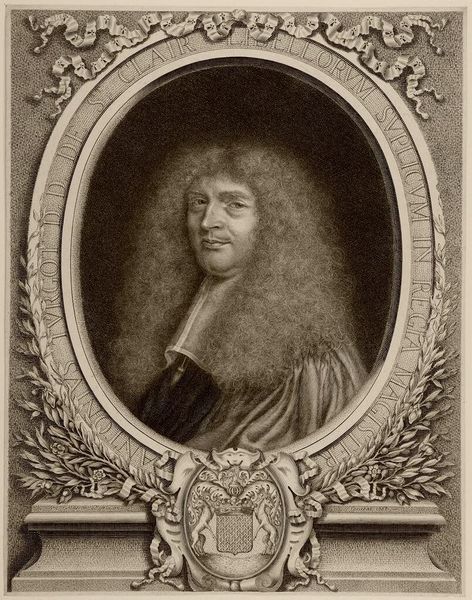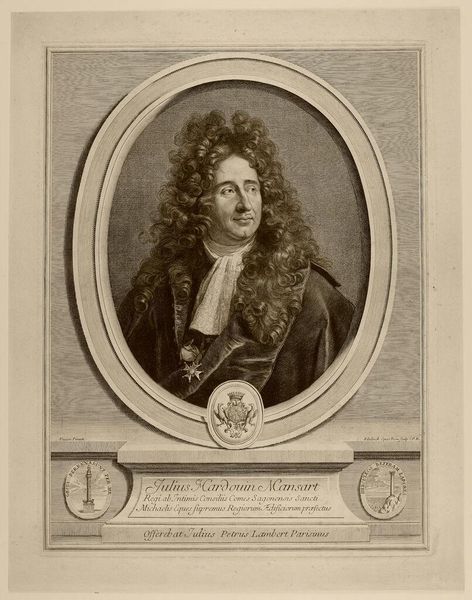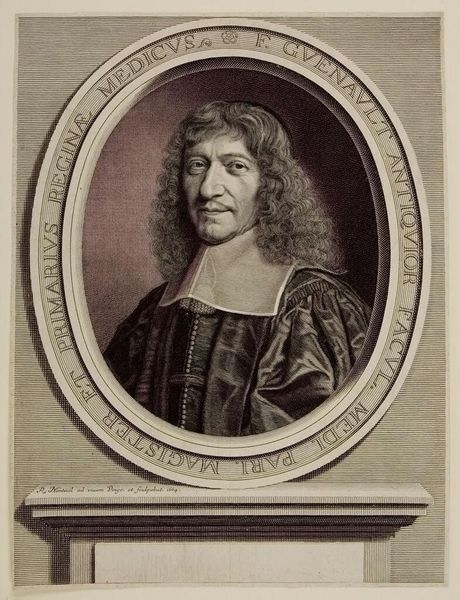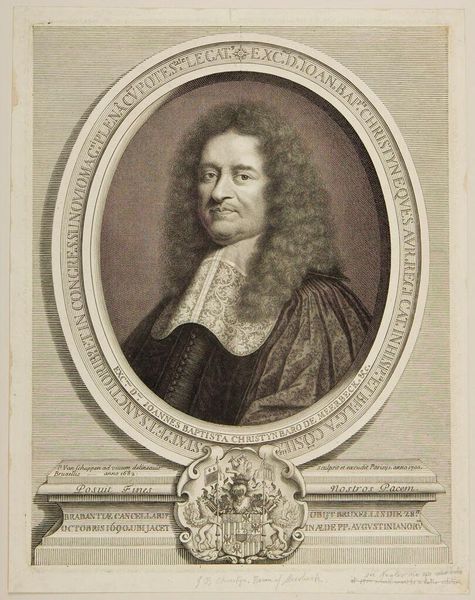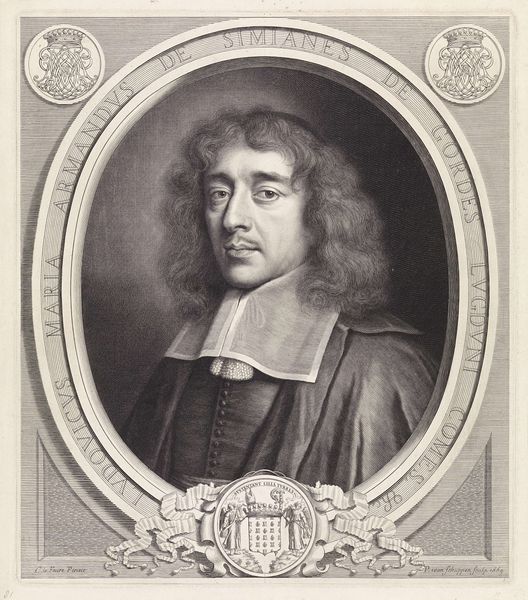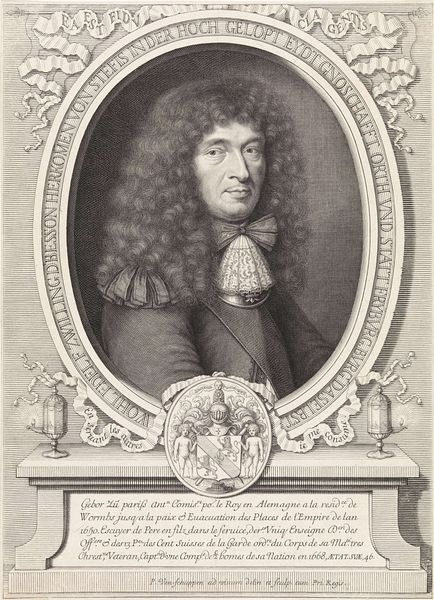
Dimensions: Sheet: 36.2 Ã 27.1 cm (14 1/4 Ã 10 11/16 in.)
Copyright: CC0 1.0
Curator: Looking at this print, "Olivarius Le Fevre d'Ormesson" by Antoine Masson, I'm immediately drawn to its tactile quality. The density of the lines creates a visual richness, almost like velvet. Editor: It's certainly a striking image. Masson produced this portrait, now held at the Harvard Art Museums, in the late 17th century. Ormesson held positions in Louis XIV's court; this image broadcasts his status and role within the French government. Curator: Precisely. The textures of the hair and fabric are rendered with such care; it speaks to the skilled labor involved in printmaking at that time. Consider the paper itself—likely handmade, a valuable commodity. Editor: And how prints like this circulated images and ideas. It's not just a depiction of an individual but also a statement about power, disseminated through a reproducible medium. Curator: The material process underlines the social context. The portrait served as a form of early public relations, crafting an image for a specific audience. Editor: Indeed, it shows how art actively participated in constructing and maintaining social hierarchies. It offers a fascinating glimpse into 17th-century politics. Curator: Studying the artistic process alongside history really shows how it served purposes beyond simple image creation. Editor: I agree. I am left wondering about other politicians' portraits, and the visual language of power they shared.
Comments
No comments
Be the first to comment and join the conversation on the ultimate creative platform.
